Japanese foods and drinks
- All Categories
- Cruise
- Customer Message
- flower
- Hokuriku tourisum
- Ibaraki tourism
- Japanese Culture
- Japanese foods and drinks
- Japanese lesson
- Kanagawa tourism
- Kyoto tourism
- LGBT
- Messe
- Mie
- Nagano tourism
- Nature in Japan
- News
- Nihongo
- Osaka Accommodation
- Otaku
- Ryokan
- Saitama tourism
- Shikoku tourisum
- Shizuoka tourism
- shopping
- Tohoku tourism
- Tokyo tourism
- Topics
- Tottori
- Transportation
- Travel Information
- Travel Tips
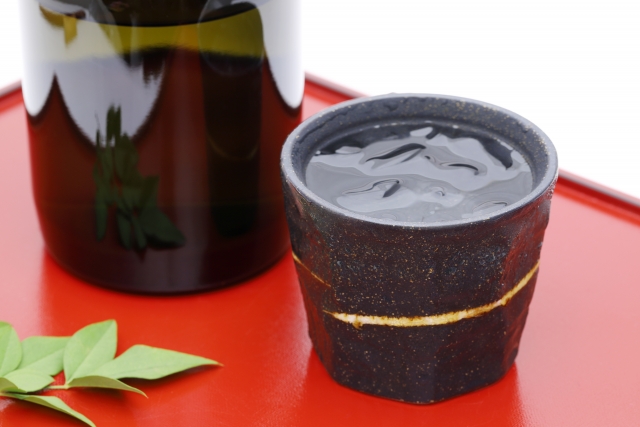
Sake is the most famous alcoholic drink in Japan and is familiar to most visitors to Japan. Sake is of course a common drink for the Japanese, but they also like other typical Japanese alcoholic drinks.
Especially shochu.
When I explain what shochu is, I always say that it is Japanese vodka.
Shochu is a distilled spirit whose ingredients include barley, buckwheat, brown sugar and sweet potatoes.
Sake has been around for around 2,000 years, but shochu is something new in comparison.
Records show that shochu was already being drunk in Japan in the 16th century. But that only makes it around 500 years old.
Shochu production is particularly flourishing in the southern region of Kyushu.
If you ask the residents of Kagoshima about shochu, for example, they will recommend many brands. Also, due to the low production numbers, a proportion of shochu output is not sold in other prefectures.
Shochu has an alcohol content of around 25%. Some people drink it straight, but it is usually served on ice or mixed with mineral water. In the cold season, some people drink it with hot water. Sometimes dried plums are also added to give it a sour taste.
Shochu has different flavors depending on its ingredients. Sweet potato shochu has a distinctive smell. However, you should try buckwheat, barley or brown sugar shochu first.
The most popular drink among young people is the “sour”. Sour is a drink based on distilled spirits to which sour fruit juices such as citrus fruits and sweetening ingredients such as sugar and syrup as well as carbonated water are added.
Sours with lemon and blackcurrant are not very alcoholic and are popular with young women.
They are usually drunk in pubs, but are also sold in cans in supermarkets and convenience stores.
If you like the taste of shochu, you can take it home with you as a souvenir.
Sake can now be bought all over the world, but shochu is not yet so well known in the world.
We recommend that you first visit an izakaya (Japanese pub) to master the drinking techniques there.
If you would like a Japanese guide for this, please contact my small travel agency.
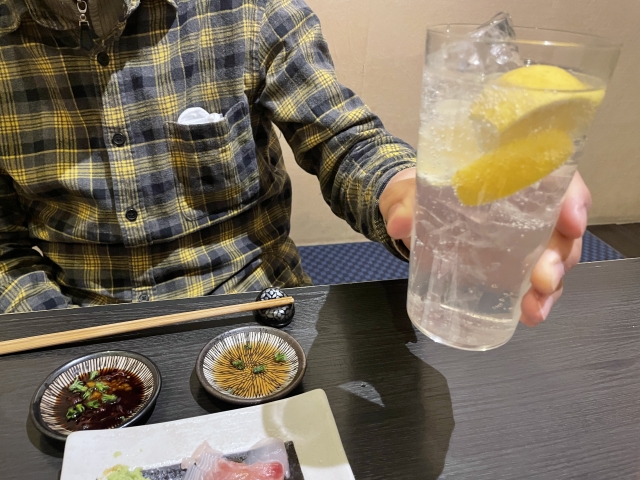
▲A person who drinks lemon sours at a Japanese-style pub.
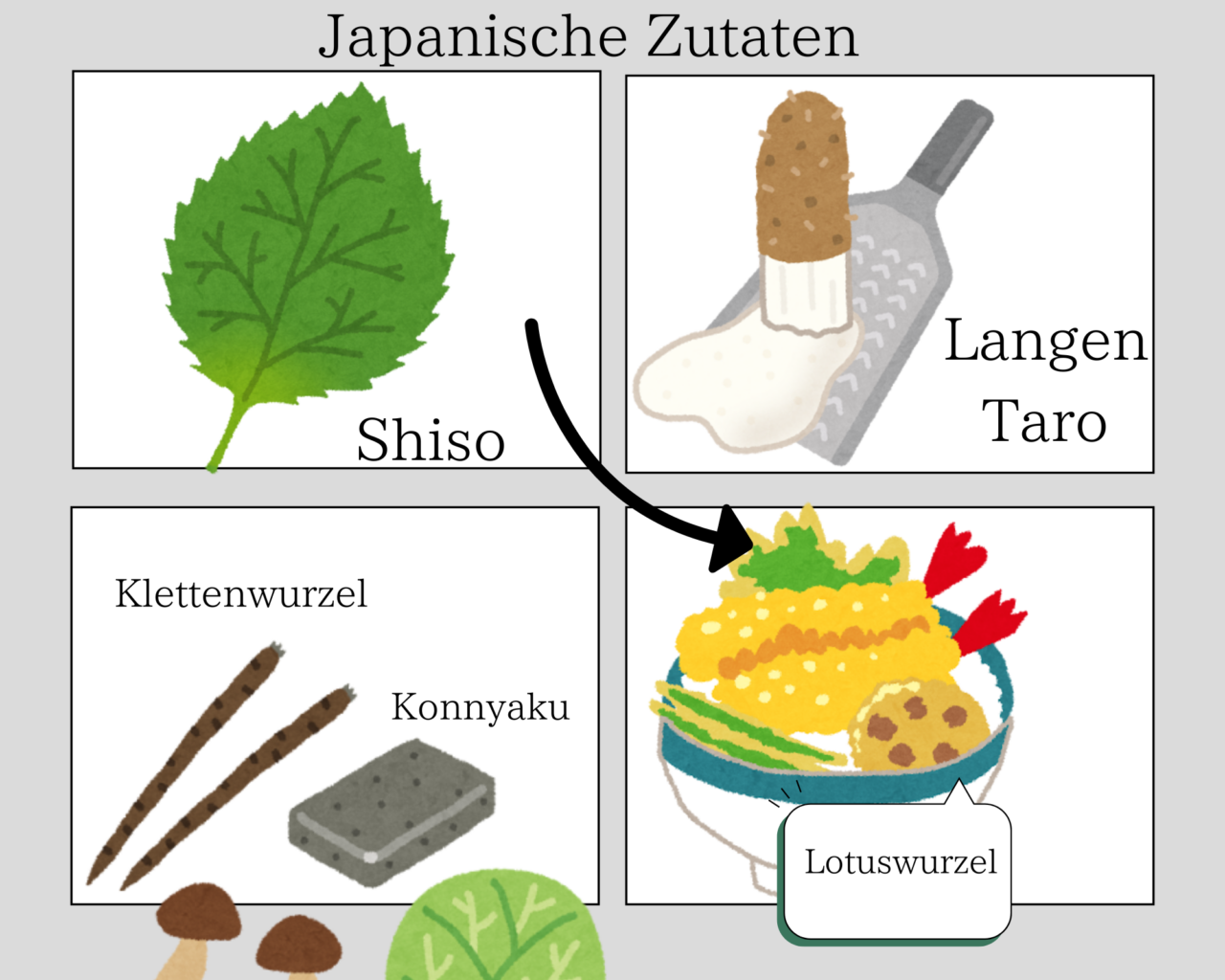
Occasionally I have the opportunity to eat with some of my clients. Japanese cuisine often uses ingredients that are only native to Japan, and I am often asked for information about them. To be precise, they are not only found in Japan, but also in other Asian countries.
For example, bamboo shoots. Bamboo shoots are young bamboo plants that can be eaten in spring. Wild vegetables are also among the foods eaten in spring. Europeans often cook mushrooms in the fall, which evokes a similar sensation. The Japanese feel spring when they eat wild vegetables. Of course, the Japanese also love mushrooms.
Not forgetting the Japanese herbs.
Shiso is an herb leaf that is often served with sashimi. It has antioxidant properties, contains vitamins and minerals, is healthy and never decorative.
Mitsuba is another herb that the Japanese love. It is often found in miso soup or chawanmushi (steamed egg with broth).
The Japanese also eat a lot of root vegetables.
The lotus root is the underground stem of the lotus plant. We often eat it as tempura or as a cooked dish. Sometimes it is also added to Japanese curry. It contains vitamin C and is a very healthy vegetable.
Burdock root is also commonly eaten in Japan. It is often cooked with carrots and seasoned with soy sauce and sugar. Sometimes it is also cooked and made into salads.
It is rich in fiber, which is also healthy.
Speaking of burdock, there is an anecdote about an Australian soldier who was taken prisoner during the Pacific War and complained of mistreatment.
Japanese soldiers complained that burdock roots were added to the meals to feed the prisoners, while the prisoners, who were unaware of this, were fed tree roots.
There are also some interesting potato varieties in Japan.
First of all, I would like to mention konnyaku. This is a food made from a type of taro tuber. It is rubbery and soft and has no calories per se. The Japanese often eat it as a stew, but it is also popular when made into a sweet jelly. As it has no calories, it is a very popular food, especially when dieting.
The Japanese also love long taro. It can be chopped up and mixed into okonomiyaki (“Japanese-style pizza”) or made into a sauce with stock and served over rice.
Japanese cuisine is becoming more and more popular all over the world, but there are still many foods that are not so well known. Ramen and sushi are of course delicious, but you should also try other dishes.
Oct82024
On your next trip, why not try an Ekiben: a special lunch box that you can buy at the station.
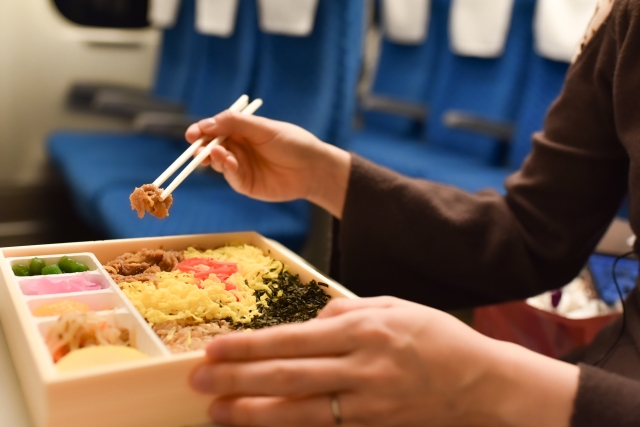
It is considered impolite to eat or drink on trains or the subway, which you normally use to get to work or school.
But not so on trains that travel long distances.
Some trains also have small tables and cup holders that can be used for meals.
The Japanese look forward to eating on these trains.
There used to be dining cars on Shinkansen trains, but unfortunately not anymore.
But the Japanese have not given up eating on long-distance trains. Because eating with a view is much more pleasant.
In the large stations where Shinkansen trains arrive and depart, there are usually ekiben stores. Here, many people ask which lunch box they should buy. It’s always a lot of fun.
The railroad magazine can also publish articles evaluating the popularity of the various ekiben.
The ranking of the Ekiben at Tokyo Station is as follows.
No. 1 Gyuniku domannaka
This is a beef bowl-style bento with ground beef and beef stew seasoned with a special sauce on a bed of Yamagata rice.
No.2 Chicken Bento
Introduced in 1964. It is a combination of fried chicken and tomato flavored rice. The former emperor (Akihito) is a big fan of this bento.
No. 3 Sumibi-yakifu Gyutan Bento
A specialty from Sendai – grilled beef tongue – on a bed of rice. It is served with salt obtained by boiling clean seawater and seaweed off the coast of Shiogama, Miyagi Prefecture.
When you buy a bento, pay attention to how you hold the box. You should always keep it flat. Otherwise the beautiful presentation will be ruined.
The drinks can be Japanese tea or beer. These are also sold in bento stores.
Unfortunately, vegan and vegetarian ekiben are hard to find. This is due to the Japanese way of thinking. The Japanese believe that not only animals but also plants have life. For this reason, they are taught from childhood to be grateful for any food.
If there is food that is taboo for you, it is better to stock up beforehand at a specialty store and take the food with you on the long-distance train.
Ekiben are a part of Japanese culture. It is a Japanese food culture that has been around since 1885.
I want everyone to get to know Japanese culture and try good Japanese food.
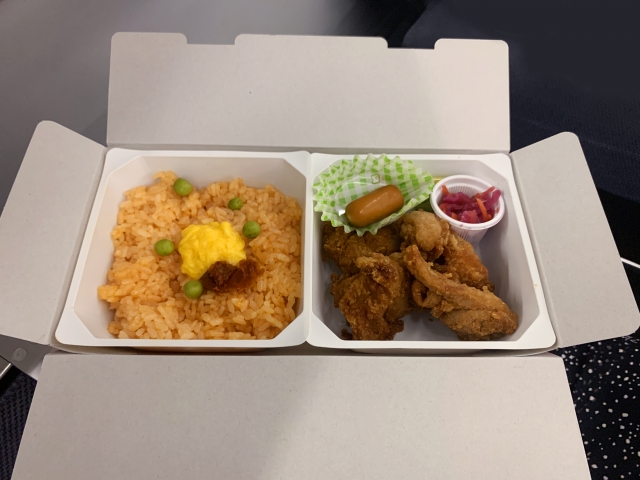
↑ No.2 Chicken Bento

↑ No. 1 Gyuniku domannaka

Japanese people say “Itadakimasu” by clenching their hands before eating. This is part of etiquette and is taught from childhood.
“Itadakimasu” means something like “I am about to receive my meal,” but has Buddhist validity.
Since ancient times, the Japanese have valued the life of plants and animals as if they were their equals.
Therefore, before each meal, people join their hands to the life of the rice, wheat, vegetables, fish, meat, etc. that they will eat.
It means, “From now on, I will live through them”.
We thanks to the life of the animals and other things.
This is the Japanese way of thinking.
That’s why children are scolded severely if they leave food or don’t like their favorite foods anymore. Because it is an action that wastes the life of someone or something.
The Japanese love to eat.
In Japan, there are many restaurants with Michelin stars. However, you don’t have to spend a lot of money to eat well.
Perhaps it is because people have always been told to eat everything with enjoyment and gratitude.
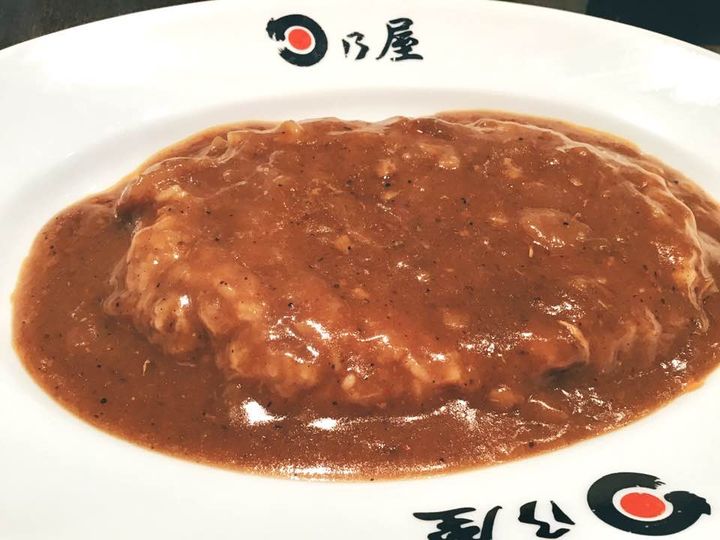
Curry is an Indian dish, but it is also commonly eaten in Japan.
Japanese curry has undergone its own development and is different from Indian curry.
In the 19th century, shortly after Japan opened to the outside world, curry was introduced to Japan.
Curry was introduced to Japan by the British. Since India was a British colony, curry was also available in the United Kingdom.
However, it also needs a mention of the Indians who contributed to the development of curry in Japan.
In Shinjuku, Tokyo, there is a historic restaurant called Nakamuraya.
A supporter of the Indian independence movement named Ras Bihari Bose had defected to Japan.
This was in the year 1915.
While Nakamuraya gave him shelter, Bose taught him how to make curry.
Today, Nakamuraya still serves delicious curry.
Curry was also put on the menu of the Japanese Navy.
The Royal Navy had curry on their menu, and it seems they imitated it.
Now the Maritime Self-Defense Force has adopted this tradition.
Every Friday, the officers of the Maritime Self Defense Force eat curry.
When you’re serving on a submarine, you lose your sense of the days of the week.
That’s why they always eat curry on Fridays to get a sense of the days of the week again.
Maritime Self-Defense Force curry can be eaten in Yokosuka and Kure.
There are also packaged ready-to-eat meals available.
There is a small JSDF store in Ichigaya where you can buy them.
When it comes to Japanese food, sushi and ramen are very famous.
However, you should also try curry.
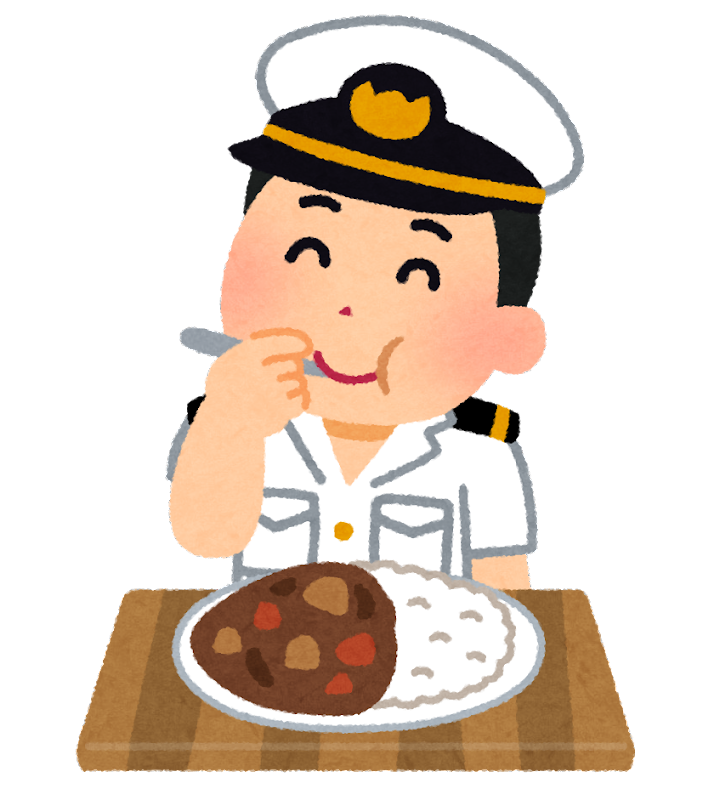
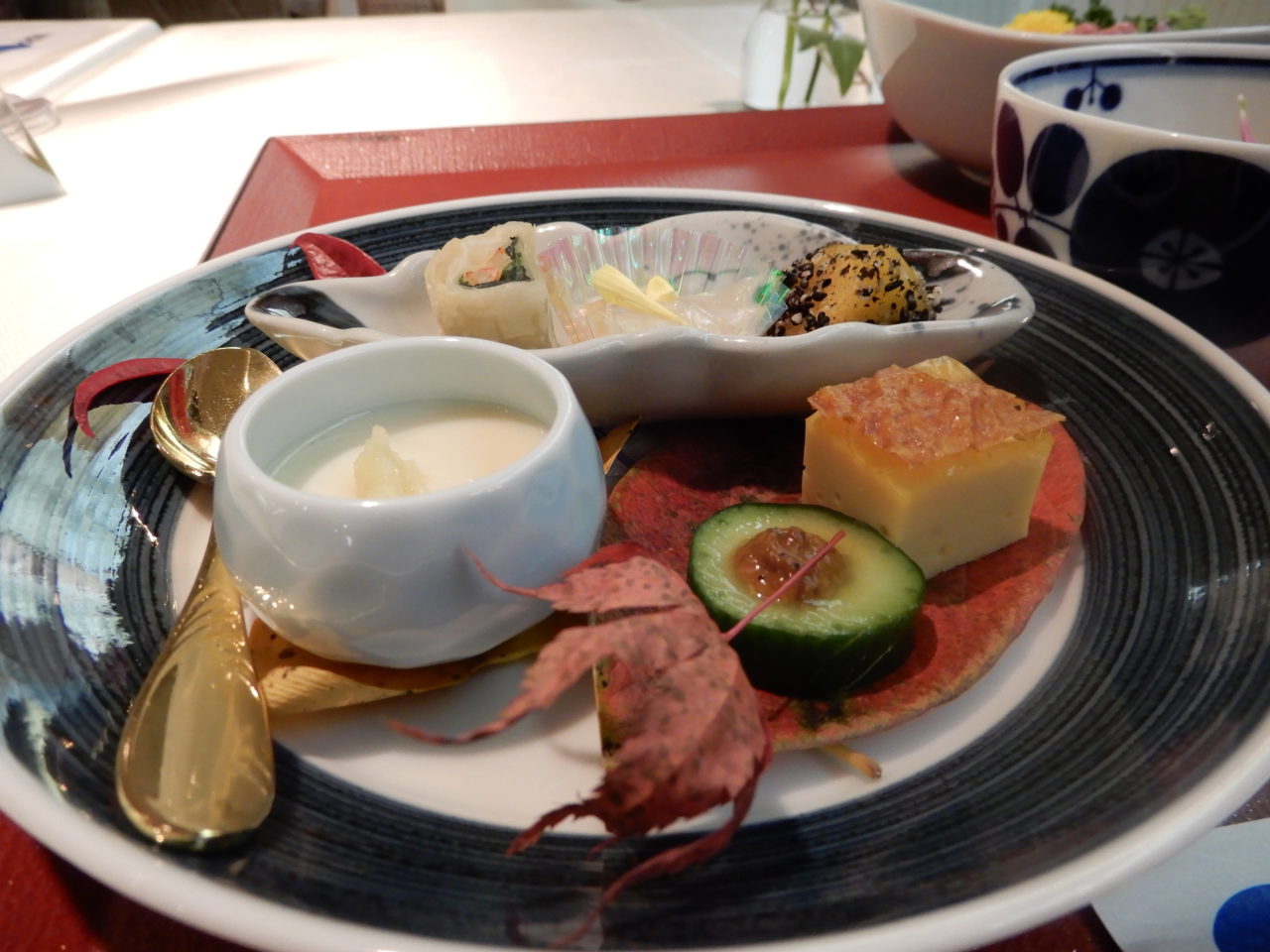
The Nippon Maru is well known for its delicious food. Since it is a Japanese ship, the Japanese food is of course highly recommended, but the Western food is also of a high standard and in no way inferior to the traditional dishes. Many of the dishes are prepared with specialties from the ports of call, which only makes your cruise all the more memorable. So look forward to it!
If you suffer from food allergies, you can inform the crew in advance. The kitchen will gladly take this into consideration. Unlike European restaurants, however, “likes and dislikes” cannot be taken into account, because in Japan “you eat what’s on the table”. That is the Japanese way.
You can always order alcoholic beverages to accompany your meal for a reasonable additional charge. Both wine and sake are selected to pair well with the menu on board. So feel free to try them out! House wine is also served, which is quite affordable and highly recommended.
Also, if you get hungry at night, you can have a small midnight snack on board. The snacks are also delicious. For example, refreshing udon noodles are offered. But you shouldn’t eat too much, not that you won’t feel hungry for the wonderful breakfast the next morning!
There are also several cafes on the ship. Each café has its own opening hours, so be sure to check them out in advance in the ship’s newspaper. In the cafes you can buy both snacks and drinks. Again, though, be careful not to eat too much so that you have enough left over for your main meals!
At this point, I would like to give you some personal advice: I myself got seasick once aboard the Nippon Maru and was unable to eat any of the meals. So if you get seasick, it is advisable to bring your own medicine! I still regret very much that I forgot mine at that time….
Click here for information on the Nippon Maru!
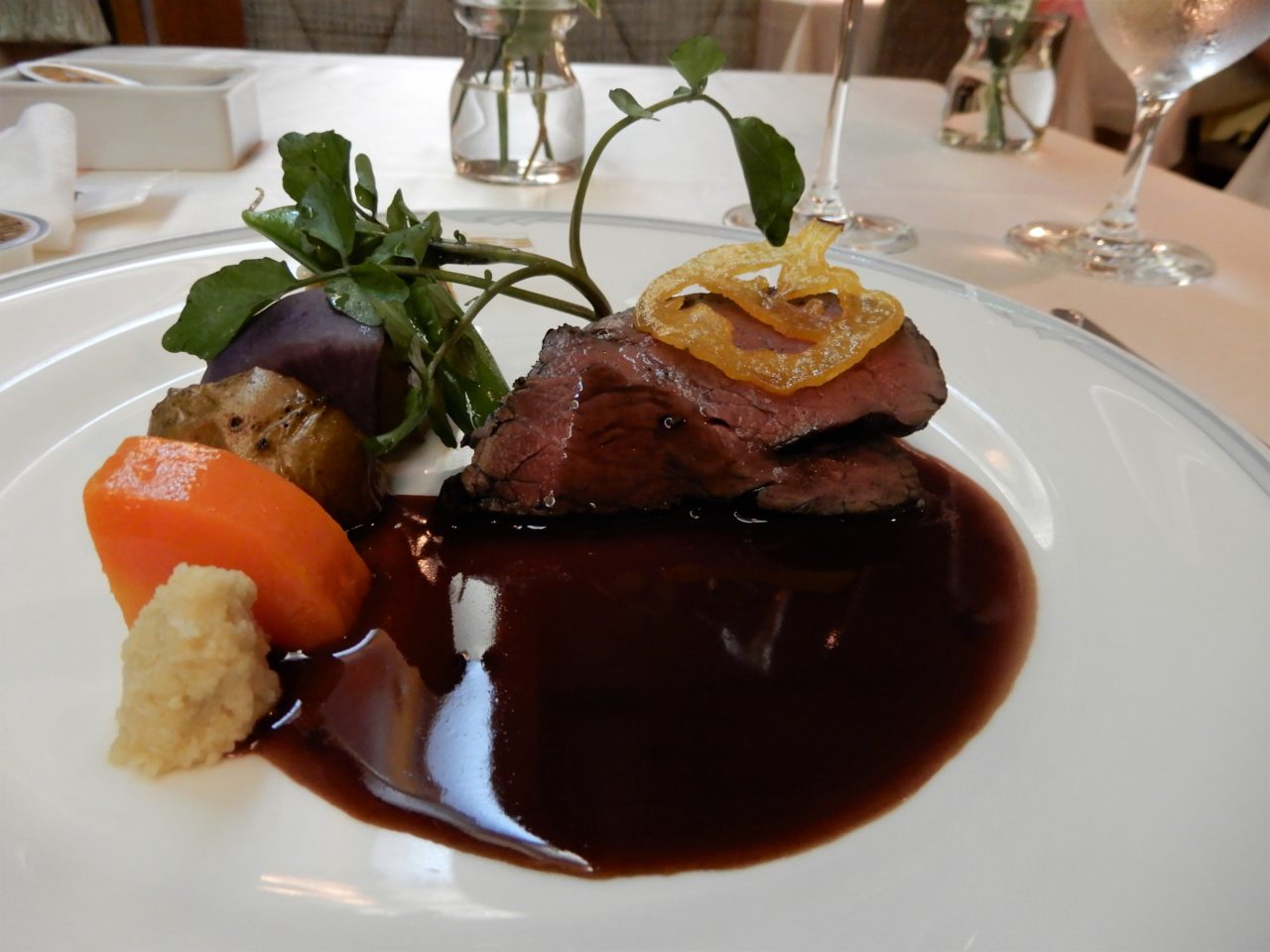
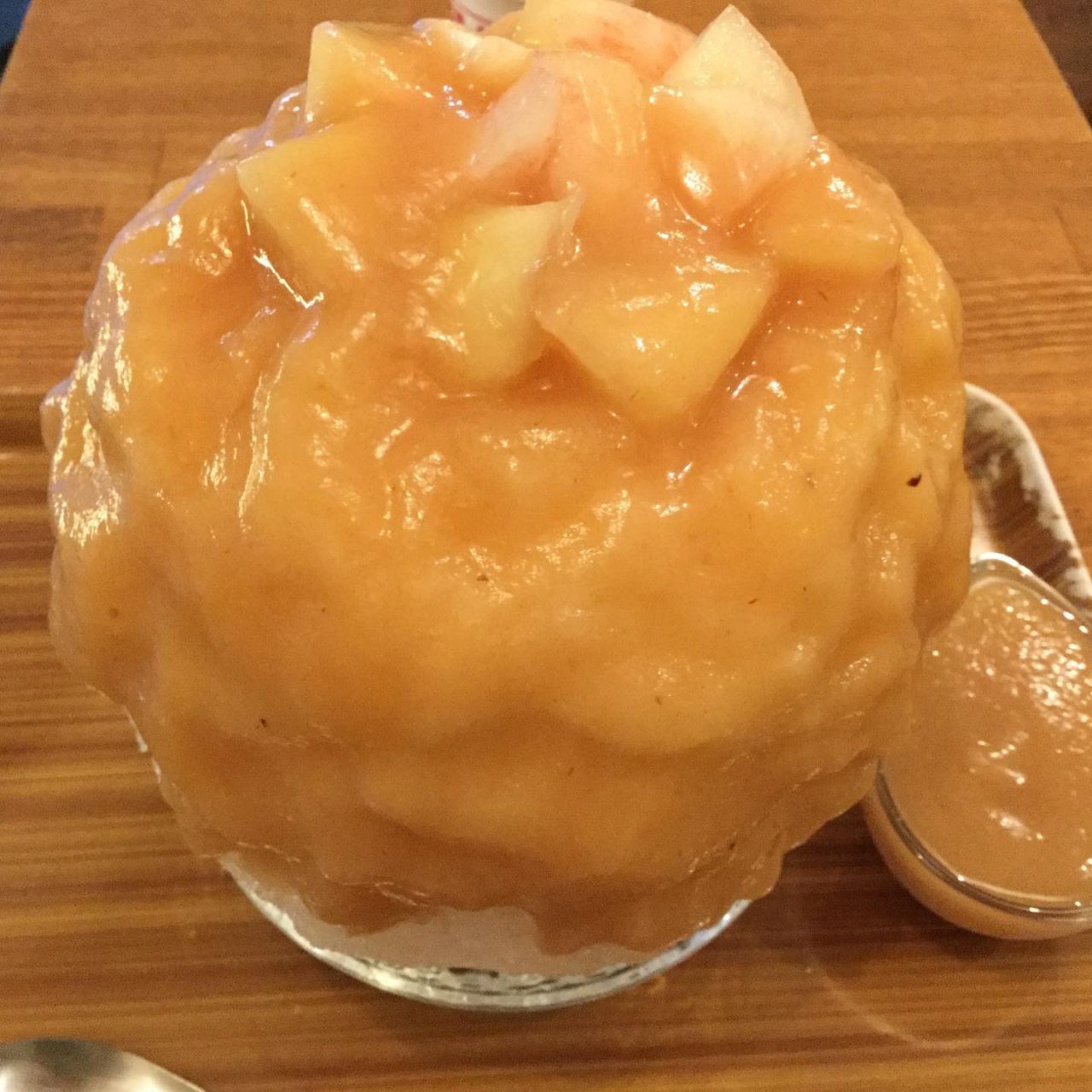
Summer in Japan is very hot.
Over 30-35 degrees Celsius is normal and it can get as hot as 40 degrees Celsius.
The humidity is high, so air conditioning is essential.
I would not recommend traveling to Japan in the summer.
But if you are in Japan in the summer, be sure to try the summer foods.
It will be a little cooler that way.
Kakigori(Shaved Ice) is one of the most popular summer foods in Japan.
It is a sweet treat made of shaved ice topped with fruits and syrup.
Kakigori has a long history.
In an essay written by a writer a thousand years ago, she describes eating kakigori.
A thousand years ago, there were no freezers, so the ice that formed in winter was stored in primitive refrigerators called “himuro.”
They were brought to the imperial palace in the summer and eaten with sweet syrup.
The syrup is said to have been extracted from a sweet-tasting plant.
Over a thousand years, Japanese kakigori has evolved and can be enjoyed in a variety of flavors.
There is also a store that specializes in kakigori.
They are very tasty, so you should not eat too many of them.
●In my small travel agency, I can make restaurant reservations.I will suggest a restaurant that suits your needs.
https://kaguyareisebuero.com/contact/
●In my online Japanese course, you can talk in Japanese about a topic of your choice. Depending on your needs, I can also supplement this with English or German.
https://kaguyaclass.com/
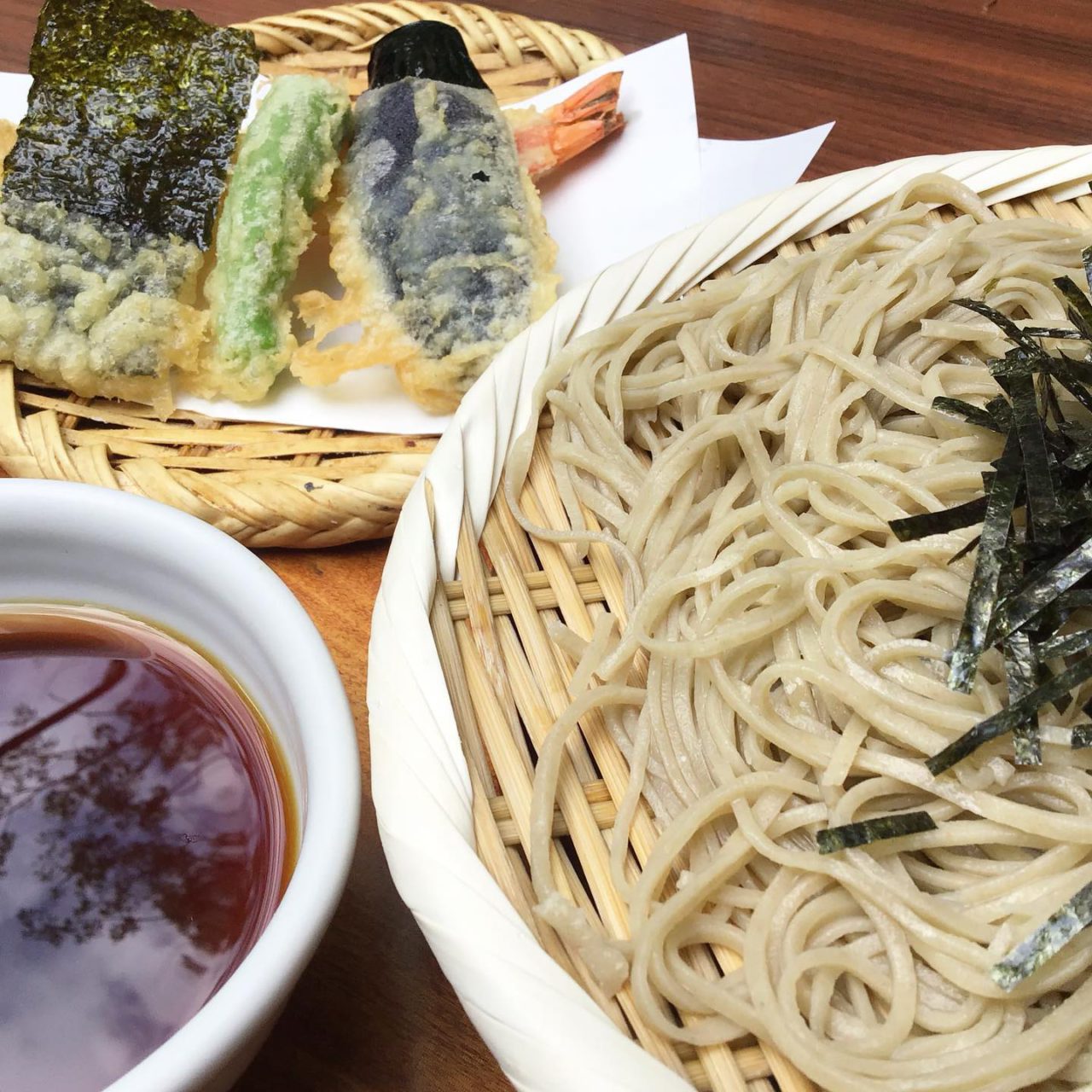
Jindaiji Temple is located in Chofu, a suburb of Tokyo.
Nearby, there is the Jindai Botanical Garden.
Therefore, you should take lots of time here to enjoy the walk.
This temple was founded in 733.
The specialty of this place is soba noodles.
There are many soba restaurants around the temple.
The soba here is exceptional.


Okonomiyaki is like japanese pizza.
All Japanese love it.
There are two kinds of okonomiyaki.
They are Osaka style and Hiroshima style.
Of course, the people of Osaka and Hiroshima are proud of their local okonomiyaki.
The Hiroshima style is a little more elaborate.
First, bake the dough like crepe, and put a lot of vegetables and meat there.
In addition, bake the noodles and eggs and stick them together.
In some okonomiyaki restaurants,the cook cooks in front of the guests.
If you can drink alcohol, beer goes well with it.
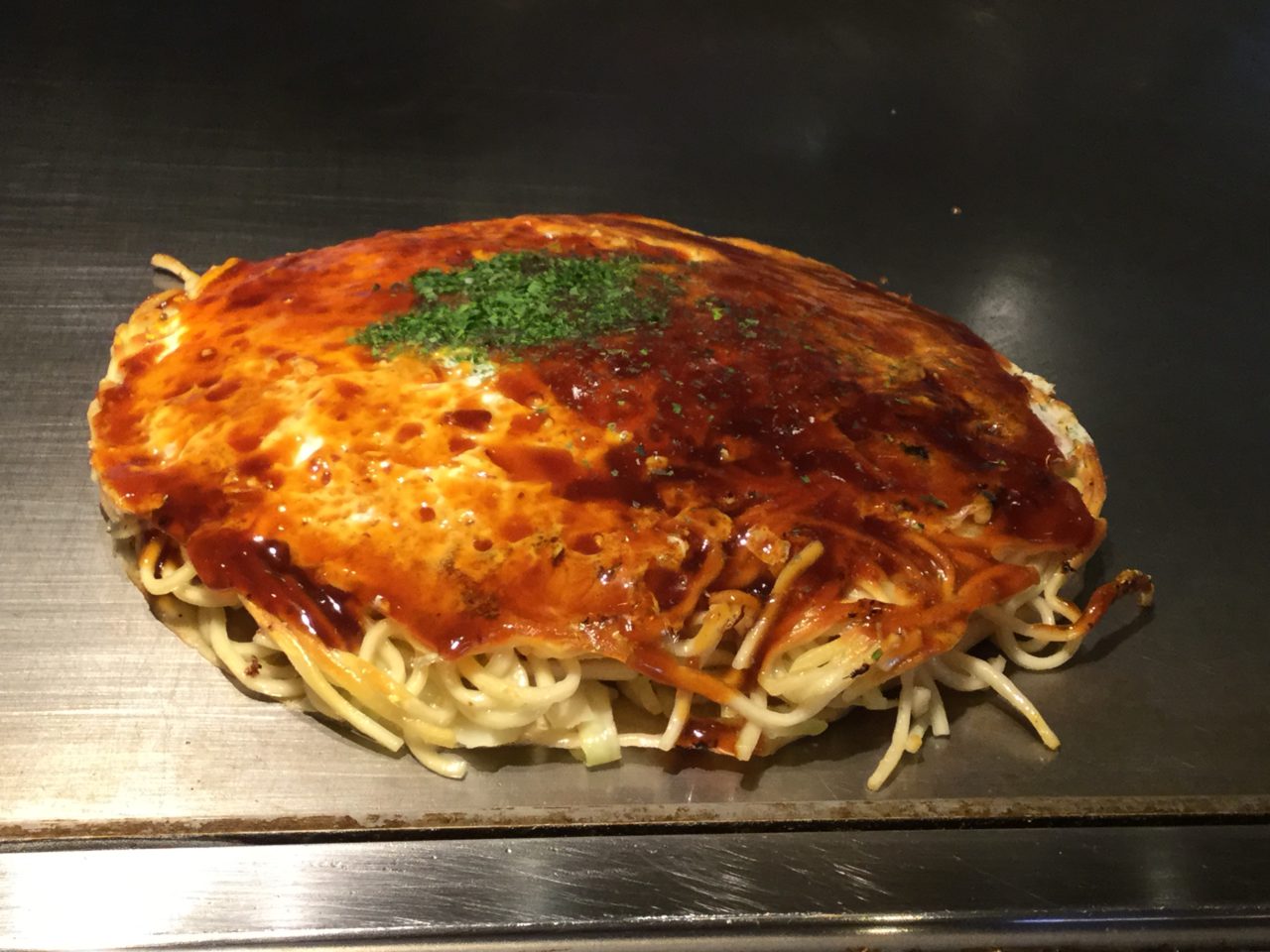
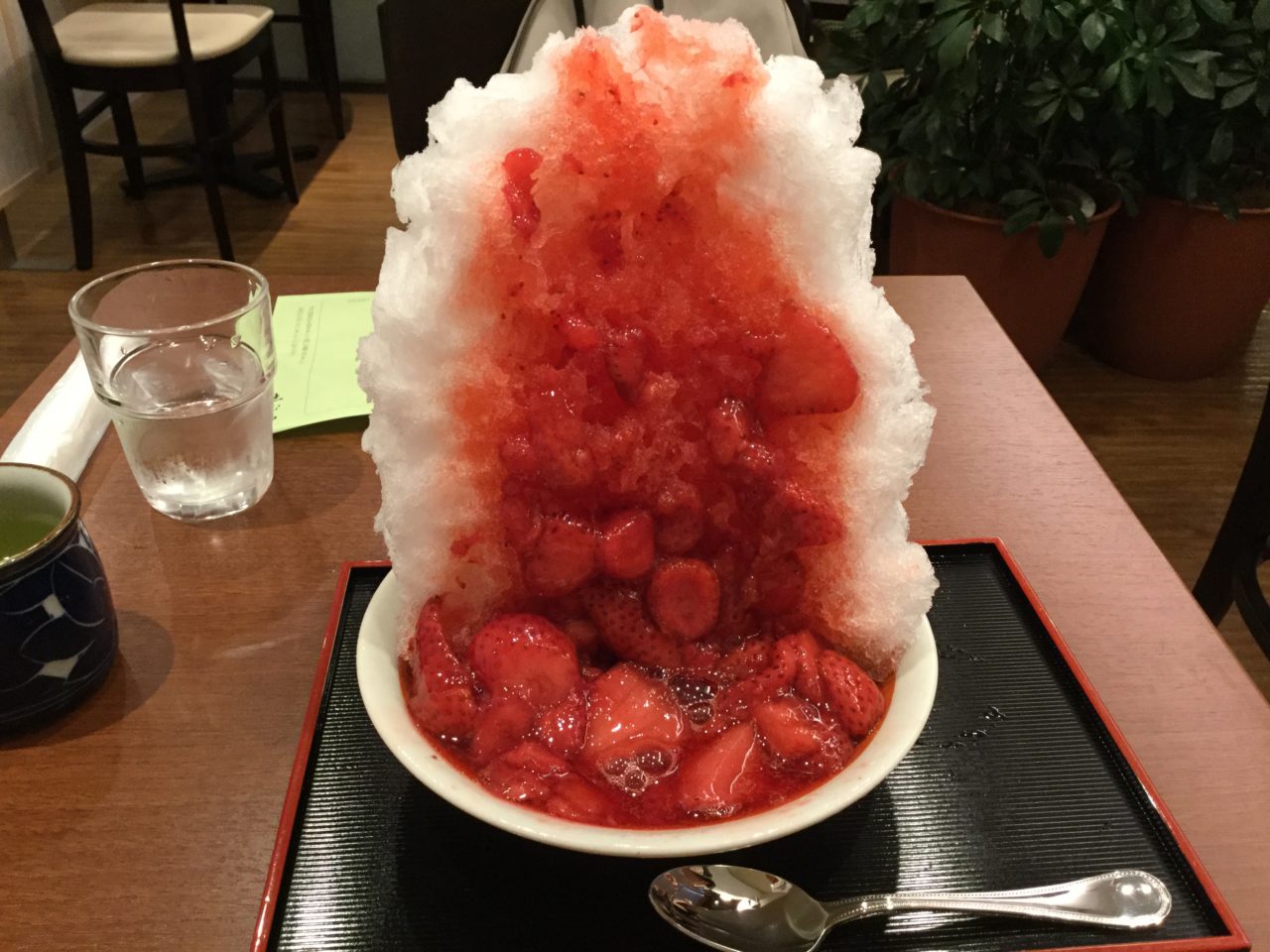
Kakigori is a Japanese shaved ice dessert flavored with syrup and a sweetener.
Especially it is hot this summer.
That’s why many Japanese people enjoyed kakigori.
The history of Kakigori is old, and people ate that 1000 years ago in Japan.
- Prev
- Topics
- Next











